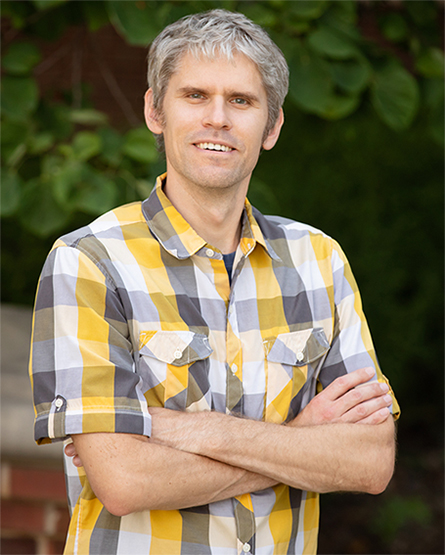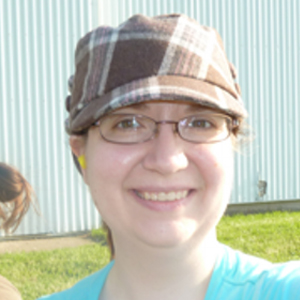Decoy receptor neutralizes coronavirus in cell cultures
As the COVID-19 pandemic continues to spread, scientists and health care providers are seeking ways to keep the coronavirus from infecting tissues once they’re exposed. A new study suggests luring the virus with a decoy – an engineered, free-floating receptor protein – that binds the virus and blocks infection.

Erik Procko, a professor of biochemistry at the University of Illinois, Urbana-Champaign, led the study, published in the journal Science.
To infect a human cell, a virus must first bind to a receptor protein on the surface of the cell. SARS-CoV-2, the coronavirus that causes COVID-19, binds to a receptor called ACE2, which plays a number of roles in regulating blood pressure, blood volume, and inflammation. It is found in tissues throughout the body, but especially in the lungs, heart, arteries, kidneys and intestines. Many researchers hypothesize that the host of symptoms associated with COVID-19 may stem from the coronavirus binding to ACE2 and keeping it from doing its job.
“Administering a decoy based on ACE2 might not only neutralize infection, but also may have the additional benefit of rescuing lost ACE2 activity and directly treating aspects of COVID-19,” Procko said.
As a potential therapeutic agent, a decoy receptor has one advantage over other drugs: To evade it, the virus would have to mutate in a way that would make it less infectious.
“A benefit of a decoy receptor is that it closely resembles the natural receptor. Therefore, the virus cannot easily adapt to escape neutralization without simultaneously losing its ability to bind to its natural receptor. This means the virus has limited ability to acquire resistance,” Procko said.
Although ACE2 binds to SARS-CoV-2, it is not optimized for that purpose, which means that subtle mutations to the receptor could make it bind more strongly. This makes it an ideal candidate for a decoy receptor, Procko said.
Procko examined more than 2,000 ACE2 mutations and created cells with the mutant receptors on their surfaces. By analyzing how these interacted with the coronavirus, he found a combination of three mutations that made a receptor that bound to the virus 50 times more strongly, making it a much more attractive target for the virus.
Procko then made a soluble version of the engineered receptor. Detached from cells, the soluble receptor is suspended in solution and free to interact with the virus as a decoy receptor.
After Procko posted his findings to a preprint server, a colleague connected him with the U.S. Army Medical Research Institute of Infectious Diseases. Researchers there, along with the lab of Illinois biochemistry professor David Kranz, verified the strong affinity between the virus and the decoy receptor, rivaling the best antibodies identified to date, Procko said. Furthermore, they found that the decoy receptor not only binds to the virus in live tissue cultures, it effectively neutralizes it, preventing cells from becoming infected.
Further work is required to determine whether the decoy receptors could be an effective treatment of or preventive agent against COVID-19.
“We are testing whether the decoy receptor is safe and stable in mice, and if successful, we then hope to show treatment of disease in animals. Hopefully that data can facilitate a clinical trial,” Procko said. He also is exploring how the decoy receptor bonds to other coronaviruses with potential to become future pandemics if they cross from bats to humans.
The National Institutes of Health supported this work.
This article was originally published on the University of Illinois at Urbana-Champaign Illinois News Bureau website. Read the original here.
Enjoy reading ASBMB Today?
Become a member to receive the print edition four times a year and the digital edition monthly.
Learn moreGet the latest from ASBMB Today
Enter your email address, and we’ll send you a weekly email with recent articles, interviews and more.
Latest in Science
Science highlights or most popular articles

Mining microbes for rare earth solutions
Joseph Cotruvo, Jr., will receive the ASBMB Mildred Cohn Young Investigator Award at the ASBMB Annual Meeting, March 7–10, just outside of Washington, D.C.

Fueling healthier aging, connecting metabolism stress and time
Biochemist Melanie McReynolds investigates how metabolism and stress shape the aging process. Her research on NAD+, a molecule central to cellular energy, reveals how maintaining its balance could promote healthier, longer lives.

Mapping proteins, one side chain at a time
Roland Dunbrack Jr. will receive the ASBMB DeLano Award for Computational Biosciences at the ASBMB Annual Meeting, March 7–10, just outside of Washington, D.C.

Exploring the link between lipids and longevity
Meng Wang will present her work on metabolism and aging at the ASBMB Annual Meeting, March 7-10, just outside of Washington, D.C.

Defining a ‘crucial gatekeeper’ of lipid metabolism
George Carman receives the Herbert Tabor Research Award at the ASBMB Annual Meeting, March 7–10, just outside of Washington, D.C.

The science of staying strong
Muscles power every movement, but they also tell the story of aging itself. Scientists are uncovering how strength fades, why some species resist it and what lifestyle and molecular clues could help preserve muscle health for life.

